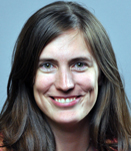This post was originally published on the IntraHealth International blog.
Corinne Farrell recently sat down with Constance Newman, IntraHealth’s senior team leader for gender equality and health and a committed advocate for social justice, to discuss this year’s International Women’s Day theme of “connecting girls and inspiring futures.”
 Asked how the International Women’s Day theme, Connecting girls, inspiring futures, relates to IntraHealth’s mission of empowering and supporting health workers, Constance Newman did not hesitate: “It’s about connecting girls to school and protecting women’s ties to the paid health workforce.”
Asked how the International Women’s Day theme, Connecting girls, inspiring futures, relates to IntraHealth’s mission of empowering and supporting health workers, Constance Newman did not hesitate: “It’s about connecting girls to school and protecting women’s ties to the paid health workforce.”
Fifty-seven countries are experiencing crisis-level shortages of health workers. In many of these countries, health workers are predominantly female, particularly nurses, midwives, and community health workers. Many health workforce leaders question whether gender issues, such as discrimination, are really among the most pressing issues contributing to health workforce shortages. Based on her 25 years of experience, observation, reading, and research in global health and the health workforce, Newman feels the urgency to document the evidence that will put these questions to rest and stimulate action. “If you don’t have women entering the paid health workforce, and if they aren’t safe, secure, and satisfied in their jobs, you are not going to have the workforce that you need—one that’s diverse and robust enough to meet the health challenges in these countries.” Read more »
